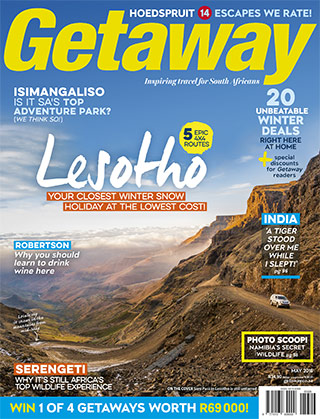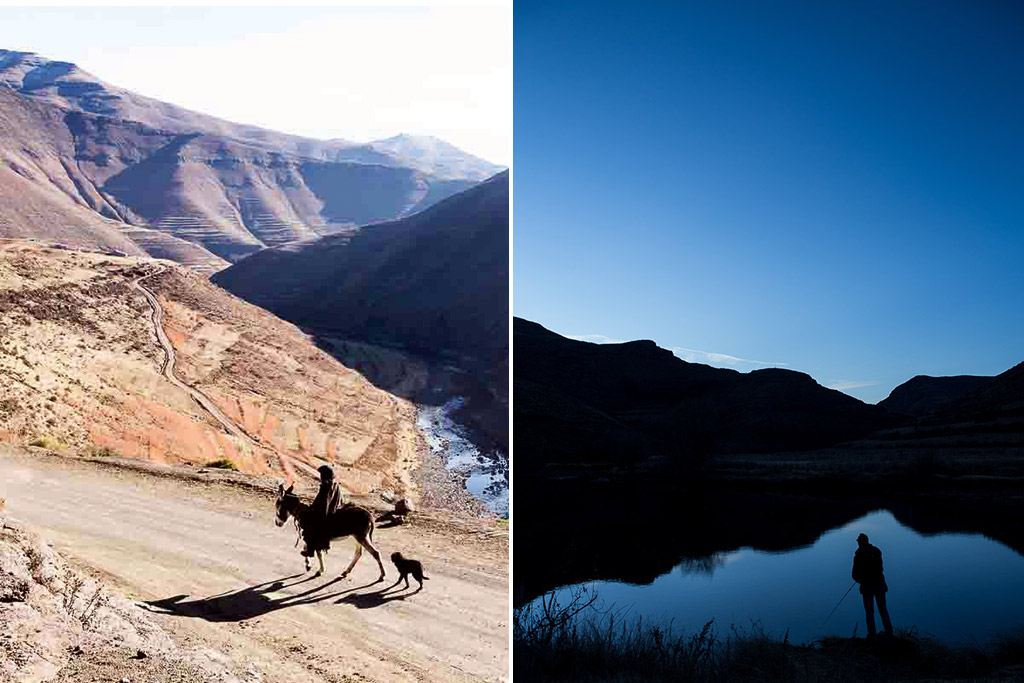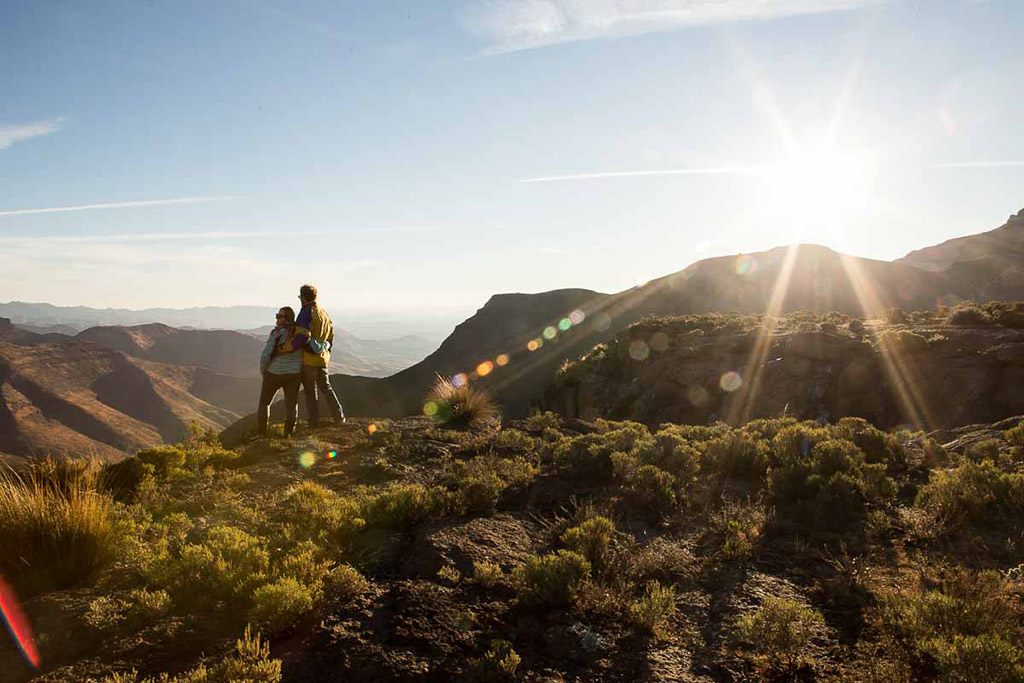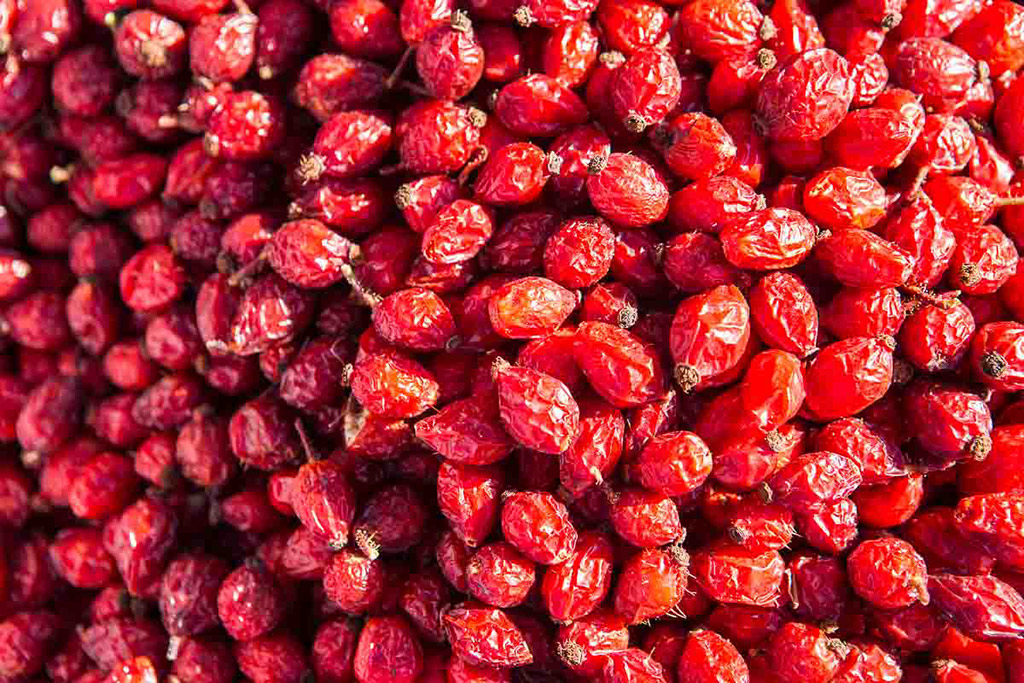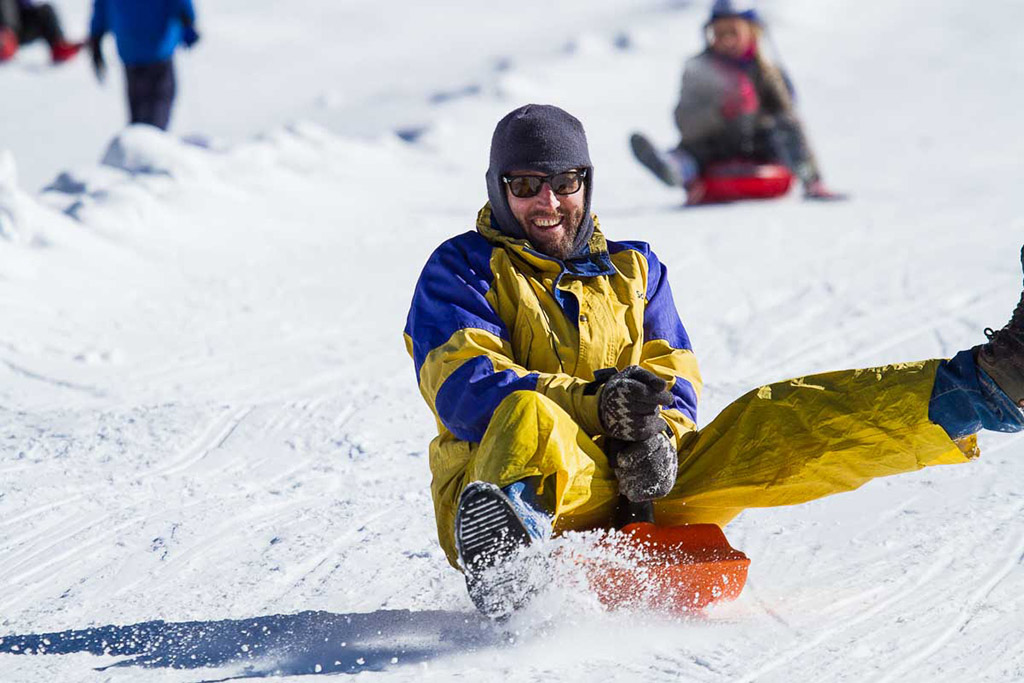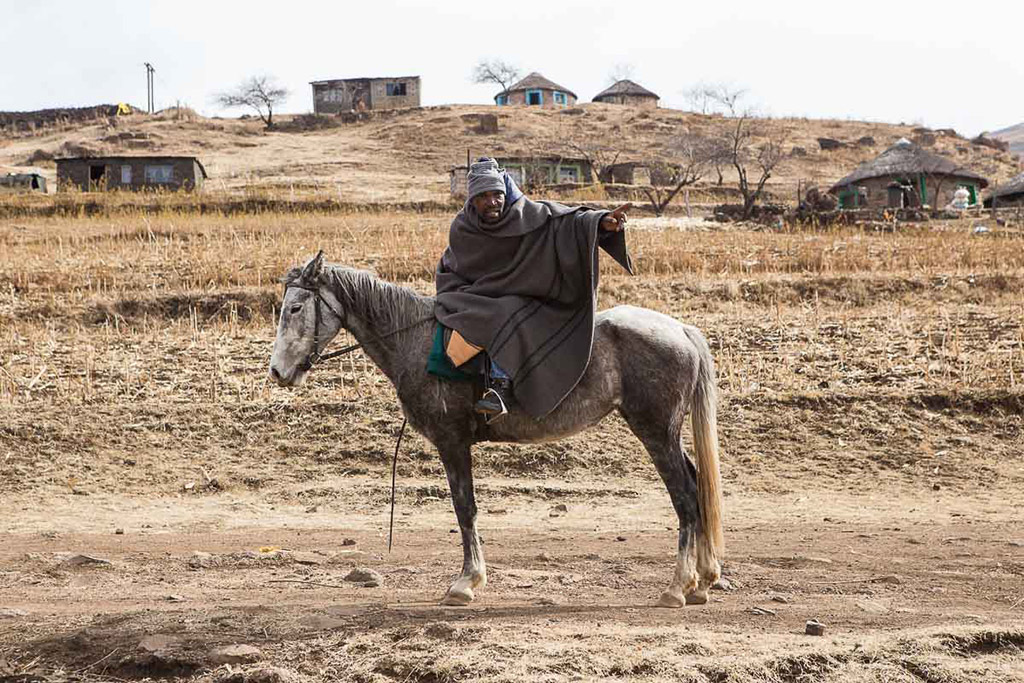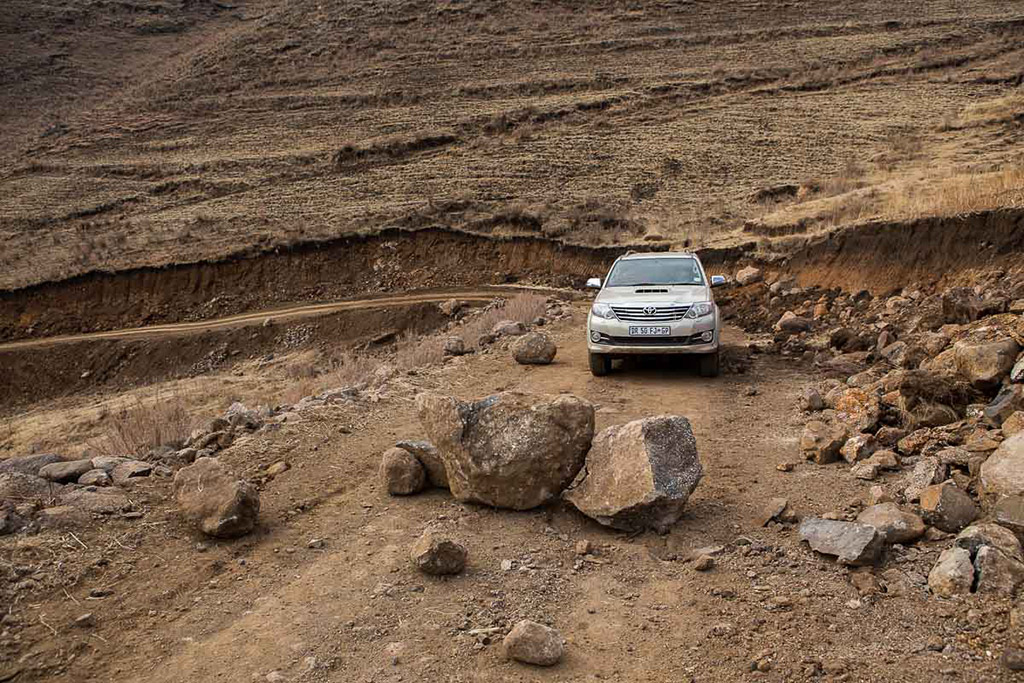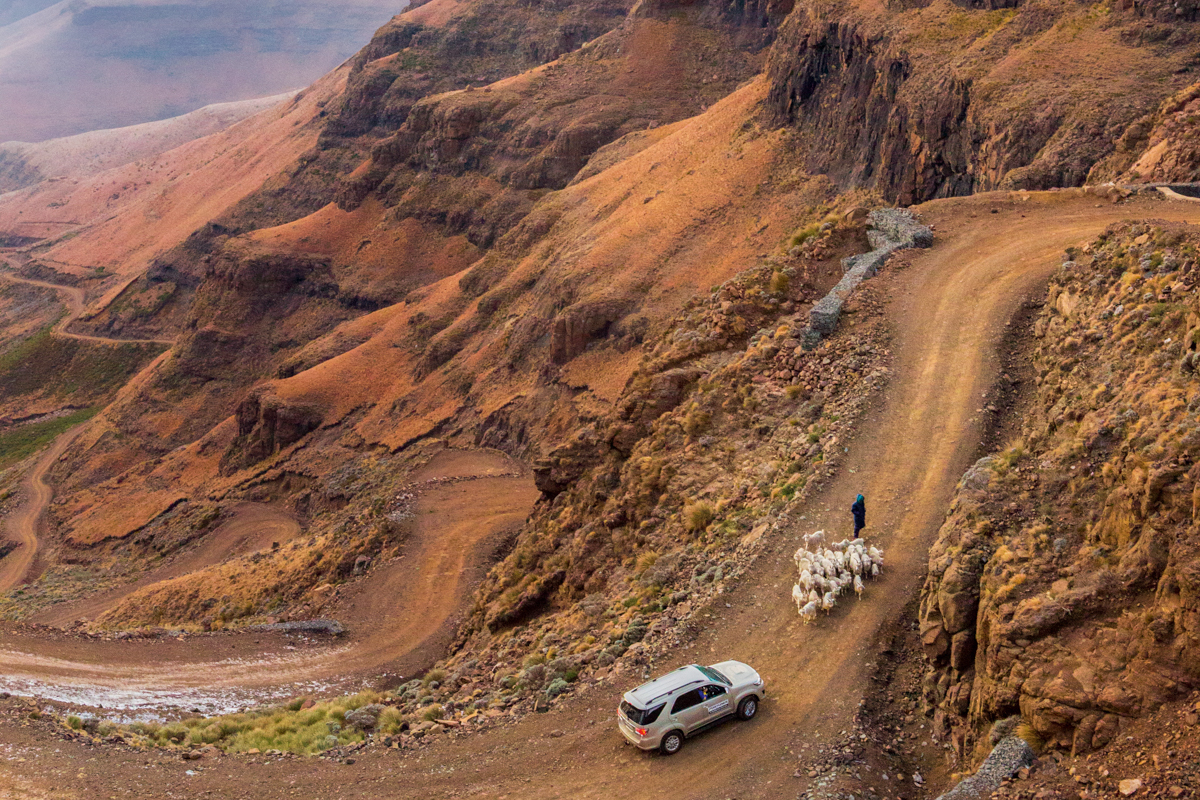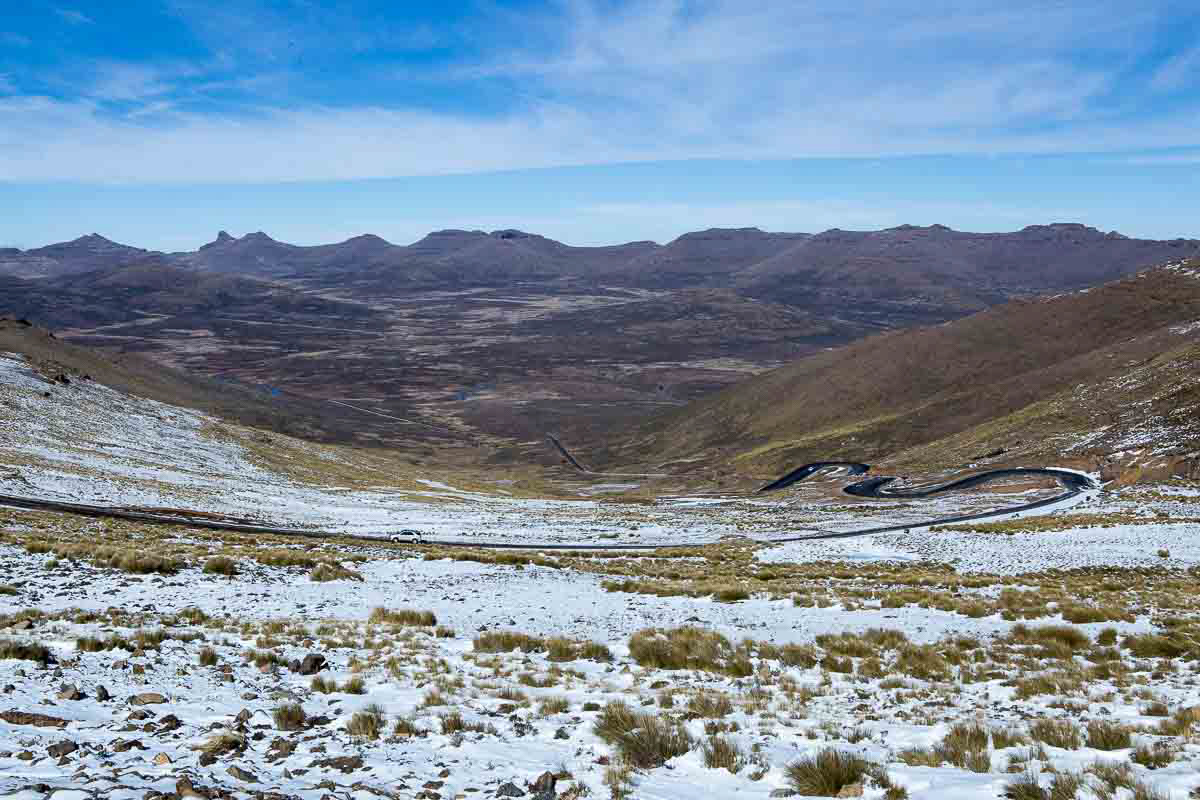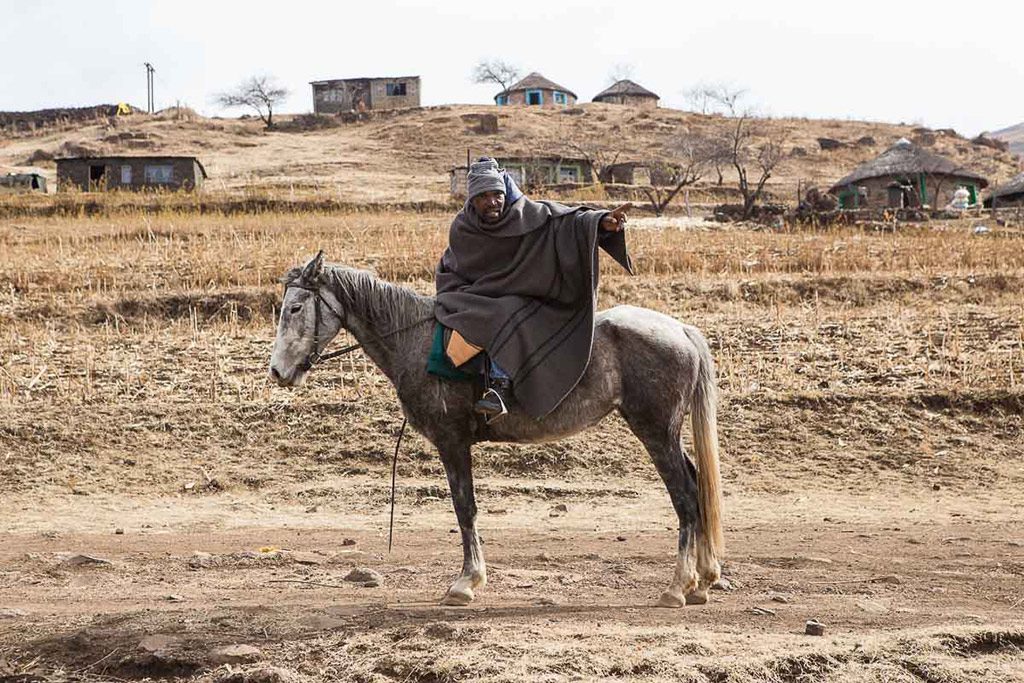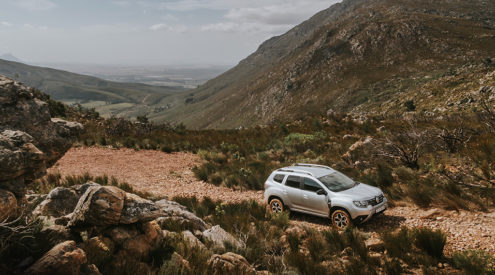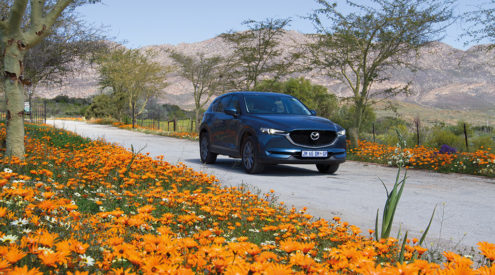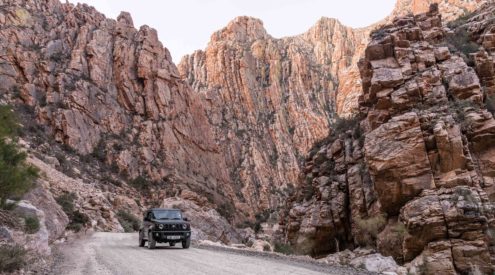‘Africa’ and ‘snow’ are not commonly found in the same sentence. So when the opportunity arose to put a Fortuner into Lesotho’s fresh white powder I booked a flight. My friend and Lesotho local Glenn Jones, always up for an adventure, was already waiting when I landed at Durban’s King Shaka International Airport.

Even in the most remote parts of Lesotho you’ll come across roadworks.
‘The Sani Pass border closes at 6pm,’ he said. There was clearly no time for small talk. We sped south on the N2 and turned onto the N3, and then drove through Hilton, turning left towards Bulwer, Underberg and Himeville to Sani Pass, where we slipped through the border with little time to spare. Snow crunched underfoot as we ducked into the warmth of Sani Mountain Lodge. Our mission was to find spectacular driving roads and see if we could lay a track through a snowdrift or two along the way. Over the next few days we spoke with locals and fellow travellers, consulted maps and prodded at the Tracks4Africa app. This is the best of what we found:
Top of Sani Pass to Oxbow Lodge (3 – 4 hours)
The road between Sani and Afriski and beyond has always been really bad. The trip used to take hours, and if you broke down, days. Now you can leave the lodge around midday, fly along perfect tar through snow-dusted mountaintops and still get an afternoon’s skiing in. So that’s what we did. Our first stop was the town Mokhotlong. It’s ragged and small but is a reliable supply point. You can buy fuel (from a real fuel pump) and the general dealer next door sells everything from bread to spades. Get SIM cards and airtime one door down. Back on the main road we passed Letseng Diamond Mine and crested the mountain over Tlaeeng Pass. At 3255 metres above sea level it’s one of the highest motorable passes in Africa. The drive was absolutely beautiful. It’s perhaps why they call this road the A1.
A sign at Afriski Mountain Resort declares their restaurant ‘The Highest Restaurant in Africa’. This meant we’d been to Africa’s highest pub at Sani Mountain Lodge and driven along the continent’s highest motorable pass to its highest restaurant ‒ all in just one afternoon. Afriski is situated in a natural bowl, cabins clustered on the hill above the ski slopes. It looks stereotypical, replete with winter cabins and frozen ‘lakes’. We had no time or budget to ski but satiated our lust for fun knocking around on bum-boards on the kiddies’ slope. We left, sunburnt, exhausted but grinning and headed further along the A1 for a glimpse of the views over Moteng Pass before backtracking to New Oxbow Lodge for the night.
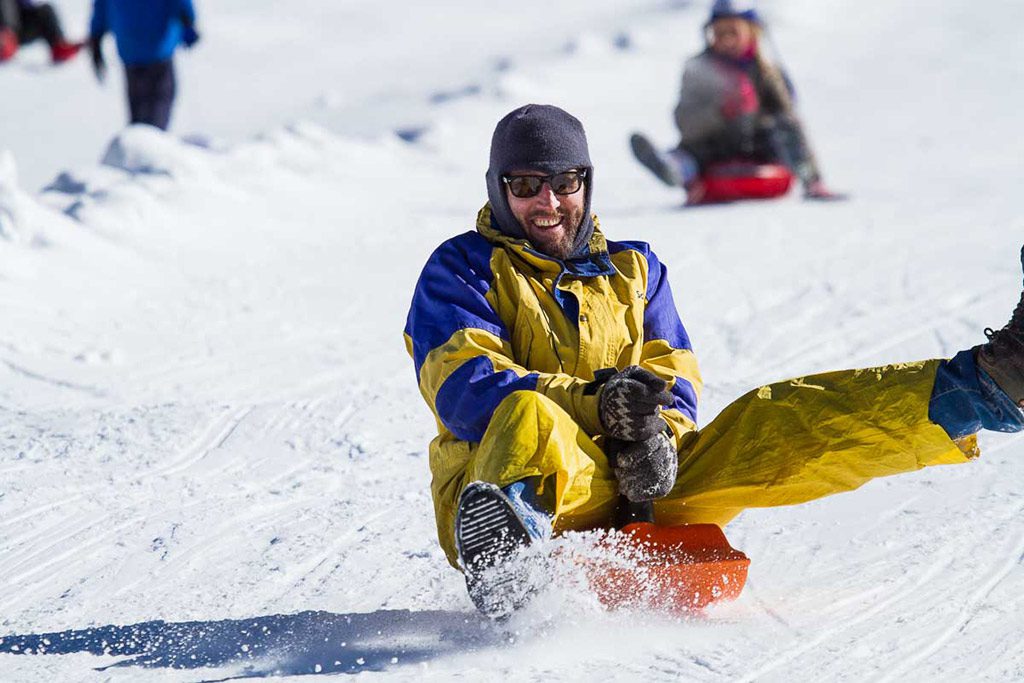
Glenn teeters on the fun side of disaster on Afriski’s kiddies slopes.
New Oxbow Lodge to Orion Katse Lodge (2 – 3 hours)
We headed south from New Oxbow Lodge on the A1, topped Tlaeeng Pass and turned west at the Katse sign. It’s roughly 32 kilometres to Kao Diamond Mine and the gravel road is in good condition. After the mine, however, the road becomes increasingly challenging: stony descents in places and slick in others. This was where we’d thought we’d get to drive in snow but by the time we arrived it had already been scraped away.
Oh well, the superb mountain views, sweeping switchbacks and fast, clean gravel would have to do. We arrived at a small bridge near Motebong Village in Ha Lejone. It’s a good place to stop, stretch your legs, eat and refuel. Fuel is only available in water bottles at the roadside for R20 per litre. From Ha Lejone we travelled on the twisty A8 tar road around Katse Dam (Africa’s highest dam) to Orion Katse Lodge, which overlooks it. Originally built to house the dam’s construction crews, the lodge is an excellent base from which to explore.
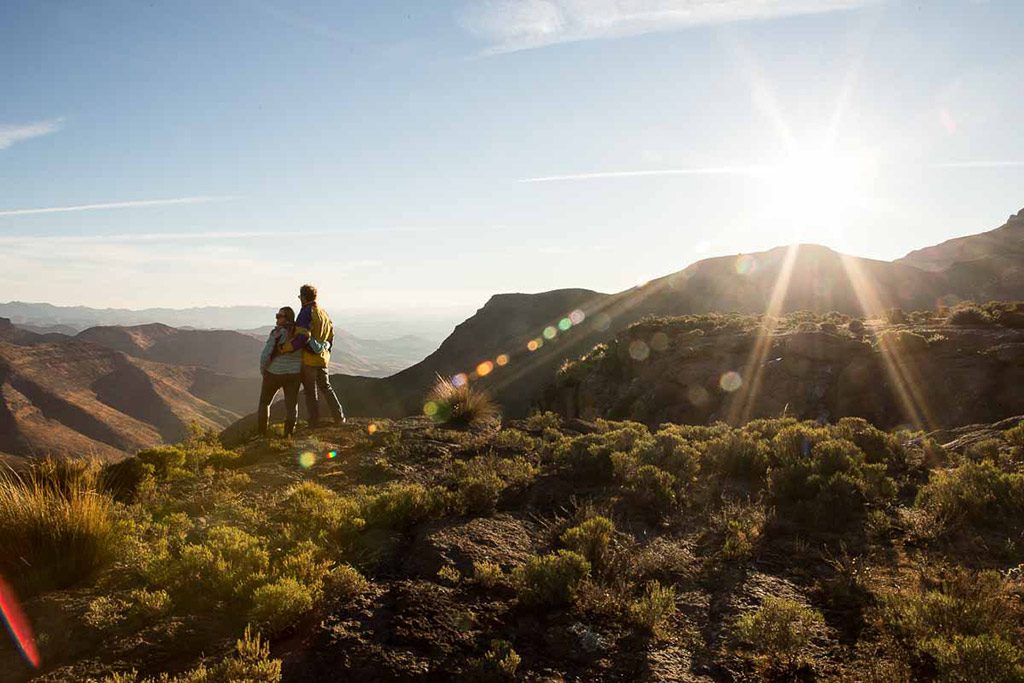
It’s usually cold and windy here on Moteng Pass, so bring a warm jumper and enjoy a sundowner in spectacular evening light.
Katse Village to Makhangoa Community Camp (1 – 2 hours)
The next morning we siphoned diesel from a cooking-oil drum, and headed west. The gravel road follows the dam wall along sheer cut-outs. To the right, the dam below gradually narrows into the Bokong River. It’s a languid drive, punctuated by stops for livestock driven by happy, sweet-craving herdboys. At the end of a thoroughly pleasant hour-long drive I pulled up the handbrake at a remote slip of wilderness ‒ Makhangoa Community Camp. Here, simple stone bungalows overlook a trout- and yellowfish-rich Bokong River oxbow. The community helps to run the camp and, in turn, villagers gain experience in running a resort and earn income from the fees for the hiking, biking and fishing activities on offer. Over dinner Rob Scott, the co-owner of Makhangoa Community Camp, neatly sums up my experience, saying, ‘It’s mind-blowing that Lesotho is not a massive tourist destination. It’s so diverse and different to everything around us.’ He also tells us about an alternative route around the dam and back to Katse Village.
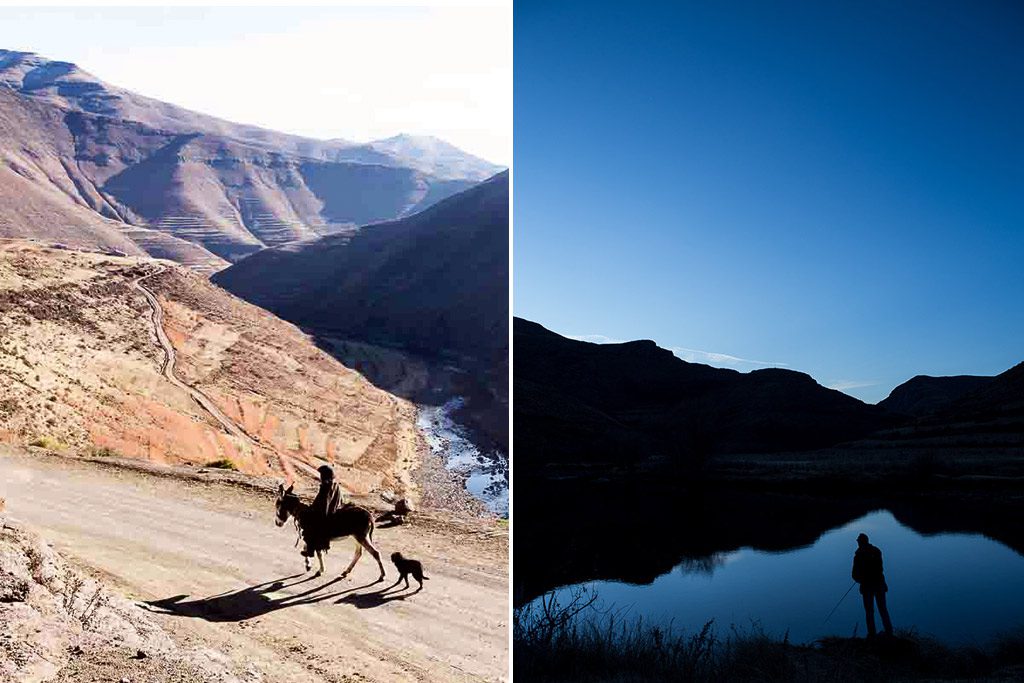
A young boy rides hi Basotho pony home after a night tending livestock in the hills; Makhangoa Community Camp has some of the best trout and yellowfish fly-fishing in Lesotho.
Makhangoa Community Camp to Katse Village (3 – 4 hours)
Rob’s route crosses the Bokong River and into the hills above Katse Dam. The dirt road is passable with some steep, loose sections and the odd eroded washout. In the cold, dry conditions the trail is not especially difficult but if it were to rain it would become very challenging. This pleasant two- and-a-half-hour detour finishes up at Ha Lejone. From there we hopped back onto the A8 and scooted along the twisties back to Katse Village.
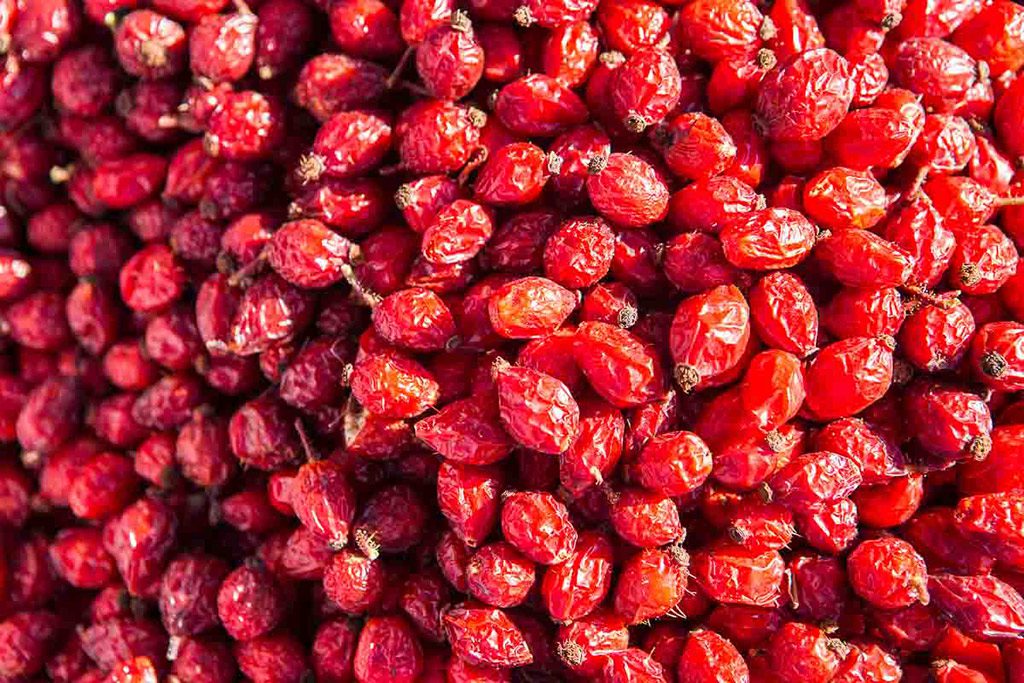
Rosehip grows wild in Lesotho and is a source of income for locals who sell it to traders for use in tea and oils.
Katse Village to Mokhotlong (5 – 6 hours)
The next day we headed back towards Ha Lejone on the A8, turning off at Ha Makopela and immediately left on the dirt road along the river as you leave the village. An old chart shows this route as a bridal path and another declares it a 4X4-only track. The road crosses a river and ascends the opposite hill. It’s a bit tricky to find but the village of Ha Palama , just before the river crossing, is a good landmark.
The surface of the road, which winds back and forth across the mountainsides, tracking rivers far below, varies from stony and rutted to relatively smooth. Of all the drives we’d explored, this is the most beautiful. The first half passes through populated areas. Around halfway it becomes virtual wilderness, devoid of huts or people. As the topography flattened, familiar Basotho horsemen appeared along the roadside. A short while later we joined up with the A1 and reluctantly heeded the call of home. We’d met great people and moved through some of Africa’s most spectacular landscapes. As for 4X4ing in snow? Well, besides stealing off the tracks to shoot photographs we encountered very few snowy 4X4ing opportunities.
Though it was disappointing, perhaps the upside here is that it will soon be entirely possible to visit popular parts of Lesotho in a family sedan.
The best Lesotho 4X4 directory
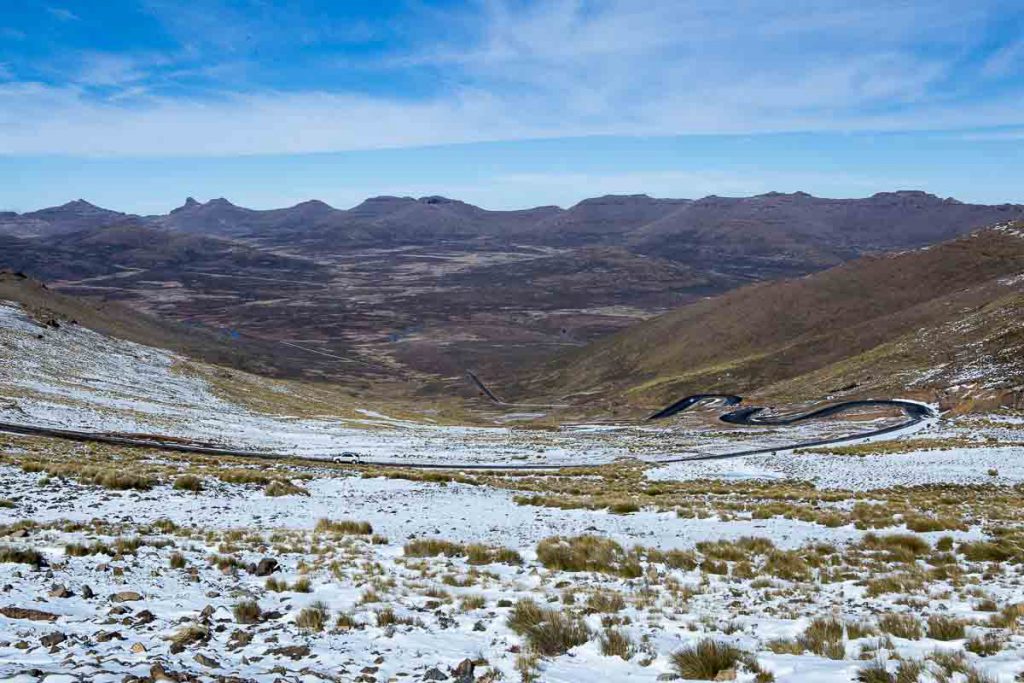
The A1 road, now tarred makes short work of the previously treacherous and slow passage across northern Lesotho.
When to go
Lesotho is beautiful throughout the year but your best chance of finding snow is in July and August.
What you need to know
South Africans do not need a visa and at present no vehicle papers are required either. Border opening and closing times are 6am to 6pm and entry costs from R30 to R50 per vehicle. In February 2016 it was still necessary to produce kids’ unabridged birth certificates. Things may have changed but enquire before you go. Go prepared to be self-sufficient for a few days. Fuel up wherever possible, including at your last stop in South Africa. Don’t stock up on food and supplies in South Africa ‒ it’s entirely viable to buy supplies at general dealers in the bigger towns. Support your host economy.
Costs
Cost depends on routes, type of accommodation and length of stay. Our fuel, food and accommodation for four nights came to about R5000 per person for the trip. Staying in backpackers and self-catering would be substantially cheaper.
Activities
Take a community-run boat trip on the Katse Dam, which gets you right up close to the massive dam wall and offers a great perspective. From R330 per group for a 15-minute trip. Book at Orion Katse Lodge.
Walk the Katse Dam wall, the second-tallest on the continent (185 metres). A short presentation before you walk gives insight into the scale of the project and throws up some mind-blowing facts. From R20 per person. Book at Orion Katse Lodge.
Visit the Katse Alpine Botanical Garden in Katse Village, with the most incredible collection of succulents including the spiral aloe, Lesotho’s national plant. R10 per person.
Learn to ski at Afriski (in summer they offer downhill mountain biking, enduro trails and abseiling). The four-day package is the best-value option. It includes all passes, equipment and instruction. From R2420 per person for kids, R2900 per person for adults excluding accommodation, which starts at R295 per person in backpackers.
Places to stay
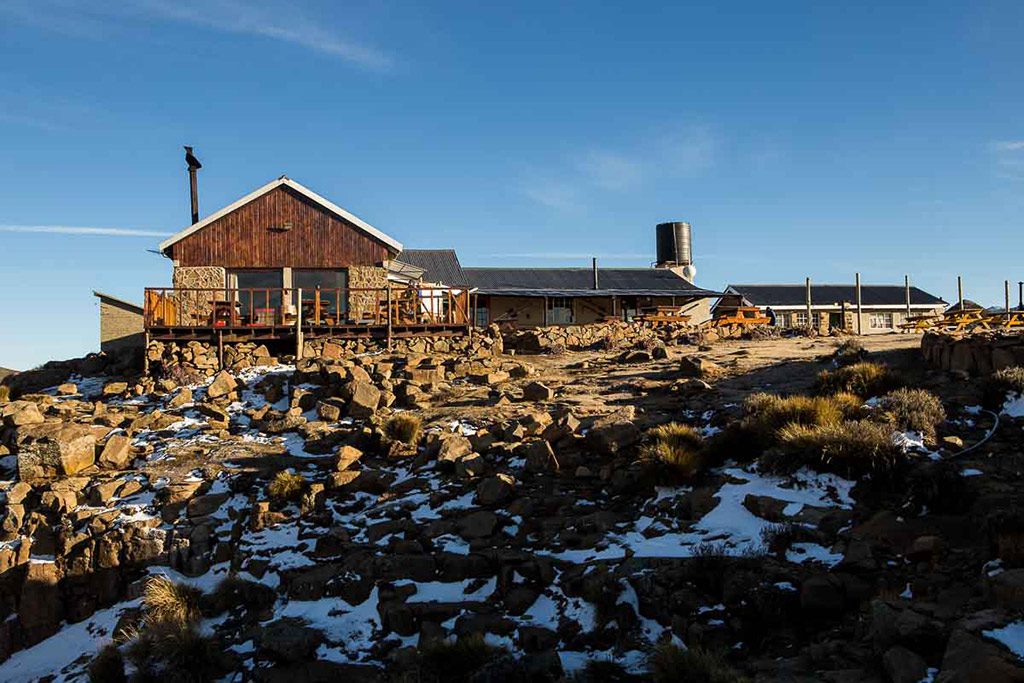
Snow outside Sani Mountain Lodge.
Sani Mountain Lodge has very comfortable en-suite rondavels and family rooms with roaring fireplaces and lots of blankets. The restaurant serves hearty buffet meals ‒ don’t forget to have a drink at the highest pub in Africa. From R1260 per person sharing. 0786347496. (S29 35.087’, E 29 17.295’)
New Oxbow Lodge may be somewhat dated but it’s perfectly comfortable and the staff is great. It’s a short 16-kilometre drive from Afriski and more affordable, so skiers use it as a quieter base for their skiing adventure. Rooms are gas heated and have en-suite bathrooms. From R490 per person sharing DBB in low season (December to February). 051933247. (S 28 46.263’, E 28 38.440’)
Orion Katse Lodge is by far the best accommodation option near the dam. They offer a heap of activities and the restaurant meals are generous and tasty (try the trout). Get a room overlooking the dam, sunrise is beautiful from here. From R350 per person for a dorm bed to R1799 for a house (sleeps six). 08611488869. (S 29 19.823’, E 28 28.875’)
Makhangoa Community Camp has newly built bungalows overlooking the Bokong River. Take fishing rods, and binoculars if you’re a twitcher. Rooms sleep our and there are self-catering or pre-booked dinner options. If the Wonderbag stew we devoured was anything to go by, I’d recommend pre-booking at least one dinner. From R500 per person. 0333422793. (S 29 16.909’, E 28 23.035’)
Places to eat
Motebong Village restaurant serves great breakfasts (R100 per person). For lunch try the generous, pork chop main (R90 per person).
Lesotho Vetkoek ‒ known as makoenya ‒ is great, filling and, at R5, a super cheap snack. It’s also a good opportunity to meet locals. Makoenya is available almost everywhere along the roadside. Just look out for plastic bowls overflowing with doughy, greasy goodness.
This article was originally published in the May 2016 issue of Getaway magazine.
Our May issue is packed full of great holiday ideas. Get your copy today.
